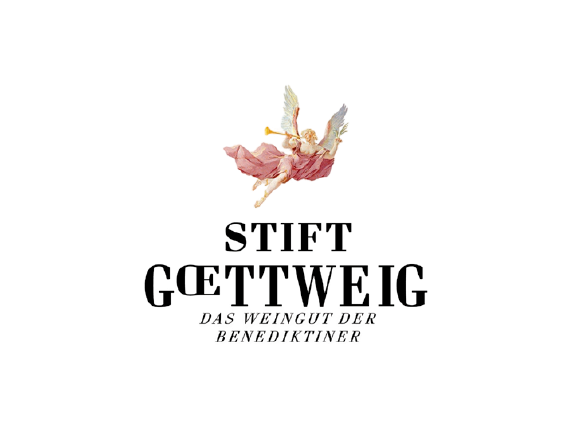MESSWEIN
The Göttweiger Messwein, or altar wine, has been an institution in this Benedictine monastery for centuries. Grüner Veltliner and rosé (from Pinot Noir) are vinified as light, dry wines. From the nature-friendly cultivation of the vineyards to the care and processing of the grapes and wine, the purity law of the church must be strictly observed. Messwein cannot be produced without the permission of the bishop, and it must be only natural and unaltered. With 12 % alcohol (this may vary, depending on the vintage) Messwein is our lightest wine – very easy and drinkable.
Ageing potential
We recommend this light and lively Veltliner for drinking within the next 1–2 years.
serving temperature
8 – 10° C
Food matching
Grüner Veltliner is ideal for Austrian cuisine, and goes nicely with spicy Eastern dishes as well. We recommend this wine particularly for starters, baked foods and Asian dishes.
KREMSTAL DAC, Furth
The ‘Göttweiger Berg’ – as it has been known since 1083 AD – benefits remarkably from a number of various microclimatic influences. Here, vegetation breathes the cool, soft and spicy atmosphere from the Dunkelsteiner Wood as well as the warm Pannonian air – all balanced with the natural humidity of the Danube region. There also are several geologic variants, ranging from gravel and sand, loess and loam to weathered primeval rock – all of which bring, along with the various grape varieties, a plethora of expressive nuances to the wines. This is an ideal site for Grüner Veltliner and Riesling. The Göttweiger Berg yields medium-bodied wines with an average of 12.5% vol. alcohol. They are matured in stainless steel tanks.
Ageing Potential
This wine could be enjoyed within three years of the harvest – but its expressive potential actually improves after 4–6 years.
serving temperature
9 – 11 ° C
Food matching
Grüner Veltliner is ideal for Austrian cuisine, and goes nicely with spicy Eastern cuisine as well. We recommend this wine particularly for starters, baked foods and Asian dishes.
KREMSTAL DAC, RIED GOTTSCHELLE, ERSTE LAGE
The origin of the name ‘Gottschelle’ cannot be exactly determined, but it most likely comes from the Alpine regions, where a ‘Goetschen’ describes the pointed protrusion of a mountain crest. (Documentation: 1341, ‘Gotschalich’, from the book of the market-town, Furth, near Göttweig, by Franz Resch, Furth 1985).
Gravel and weathered sediments form the base for huge loess formations, which are highly conducive to the development of the Veltliner. One impressive sight is the Zellergraben, a sunken road that exposes the thickness of the loess formations. The Zellergraben also underscores the meaning of the theme ‘loess and wine’.
The vines here are between 50 and 70 years old, and yield highly concentrated wines with great cellaring potential. The Grüner Veltliner ‘Gottschelle’ is a regionally typical wine with great character.
ageing potential
Minimum of 15 years
serving temperature
10 – 12° C
food matching
Grüner Veltliner is ideal for Austrian cuisine, and goes nicely with spicy Eastern foods as well. We recommend this wine particularly for starters, baked foods and Asian dishes.




